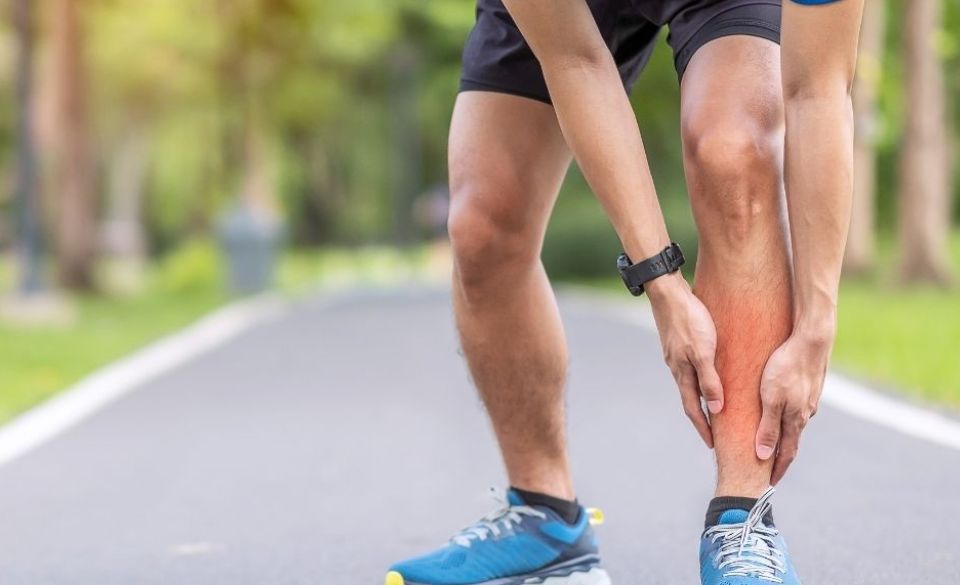
Top Shin Splint Exercises For Runners
Page Contents
Got a nagging ache in the front of your shins that simply won’t go away? Have you been engaging in a lot of jumping-related activities or running a lot? If so, you may be suffering from “shin splints” and should begin some shin splint exercises.
The obscurity of this lower leg ailment, which is frequently brought on by overuse, makes it challenging to recover from.
Shin splints, sometimes referred to as “medial tibial stress syndrome,” is an injury that occurs more frequent among endurance athletes like runners and athletes who participate in jumping sports like basketball or volleyball.
Shin splints arise when your training goes beyond what your body can tolerate, similar to other ailments connected to running. Shin splints can turn into a bone stress injury if a change isn’t made and shin splint exercises aren’t incorporated.
There are probably no “muscle imbalances” or biomechanical issues like pronation to blame, in contrast to popular but outdated studies. Your body is made just fine; it was probably a few extra kilometres, an accelerated pace, insufficient sleep, or insufficient calorie intake that finally did you in.
The ideal strategy is to concentrate on strengthening the muscles in your lower leg in order to increase your body’s capacity to manage training stress.
We’ll show you the best shin splints exercises in this article so you can stop the pain and resume your activities. You’ll learn;
What Are Shin Splints?
Why Should You Do Shin Splint Exercises?
The Best Shin Splint Exercises For Runners
What Are Shin Splints?
Our tibias, the long bones that extend from our knees to our ankles along the front of our legs, are what we refer to as our shins or shinbones. One of the two bones of the lower leg, together with the fibula, is the second-largest bone in the human body.
The front, lower portion of your leg—the so-called “shins”—is really made up of a number of bones and muscles.
The most well-known shin muscle for runners is the tibialis anterior, which is in charge of dorsiflexing and inverting your foot.
Although the fibula can cause issues as well, the tibia is the main bone with which runners are most concerned.
Tibial stress syndrome, often known as shin splints, is a common overuse condition that affects runners and is brought on by too much impact from the repeated action of running. Overuse leads to discomfort, agony, and even minor tears in the muscles and connective tissues.
Shin splints typically begin as a subtle onset of discomfort in the lower leg that worsens with movement. The discomfort may be felt on the front of the shin as well as on the inside of the shin bone (the medial part of the tibia). The discomfort is typically characterised as deep, dull, and boring, but it can sometimes become intense if it becomes more severe.
Why Should You Do Shin Splint Exercises?
While there are no quick remedies for shin splints, making a commitment to lower leg muscle strengthening and shin splint exercises and performing them three times per week can help you recover faster than before. This setback may actually help you become a better runner. You could even run farther than you ever could if you build up the strength in your shins and calves.
The Best Shin Splint Exercises For Runners
Unfortunately, strengthening the tibias anterioris can only marginally prevent shin splints since weak shin muscles are not the actual cause of shin splints.
In actuality, a better strategy for preventing shin splints is to increase calf strength, abductor strength, and hip muscular strength with these shin splint exercises.
The calf muscles, which make up the majority of the lower leg, have been demonstrated in studies to support the tibia during impacts.
Now here are some shin splint exercises and stretches to help prevent and recover from shin splints:
Calf Raises
1. With your feet hip-width apart, hands at your sides, and torso straight, stand tall.
2. On the balls of your feet, slowly raise yourself.
3. Slowly lower yourself back to the starting position.
4. Depending on your level of fitness, repeat for 15-20 times.
Dumbbells can be added to bodyweight calf raises once you’ve mastered them to make them more challenging.
Heel Rolls
1. With your feet hip-width apart, hands at your sides, and torso straight, stand tall.
2. When you are standing on your tiptoes, lean forwards and thrust up with your toes.
3. Put your weight back on your heels and rock back.
4. 30 seconds of this motion should be continued.
Gastrocnemius calf stretch
1. For support, lean your hands on a wall or the back of a chair.
2. Step backwards with one foot. Keep your feet straight front and flat.
3. Bend the front knee till you feel a stretch in the calf of your back leg while keeping your back heel down and your back leg straight.
4. Throughout the stretch, maintain a straight back.
5. For at least 30 seconds, maintain the stretch.
6. Repeat the stretch two or three times on each side.
Straight-leg calf raises
By strengthening the gastroc and soleus, you will lessen the strain on your shin bone.
1. Put yourself at the step’s edge.
2. Drop your heels towards the floor while keeping your legs straight.
3. Your heels should be in the air as you rise up onto your toes.
4. Repeat 10–12 times, lowering back down slowly each time.
5. Do one leg at a time to make these harder.
Tibialis anterior muscle strengthening
1. Lie down on the ground or a bench.
2. An exercise band should be wrapped around a reliable object and then around the top of your foot.
3. Flex your ankle towards you while keeping your toes pointed upward for two counts. To the count of four, lower your ankle back down.
4. Repeat 10 to 20 times.
Step-ups
Your glutes need to be strong in order to absorb load while running making this a great shin splint exercise to prevent shin splints.
1. Locate a step that is just above your knees.
2. In order to avoid pushing off with your rear leg, place one foot on the step and rise up while thrusting your knee upward into the running stance.
3. Repeat 10–12 times on each side, slowly lowering your foot back to the ground in between repetitions.


